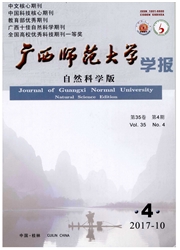

 中文摘要:
中文摘要:
以CdCl2和Na2TeO3为反应物,巯基丙酸作为稳定剂和还原剂,通过微波辅助法快速合成高质量CdTe量子点,用CdTe量子点和染料N719共敏化TiO2纳米管阵列,以此为光阳极组装敏化太阳能电池。采用X射线衍射、紫外-可见吸收光谱、荧光光谱、扫描电镜和透射电镜等分析手段对样品进行表征,最后测定太阳能电池的光电转化效率。相对于传统CdTe量子点制备过程,采用巯基丙酸同时作为还原剂和稳定剂可以将以往的两步反应简化为一步,不需要复杂操作和氮气保护,减少了实验过程中有毒气体的排放;同时采用微波辅助法制备,还可以使量子点的生长更加快速。随着微波加热时间的增加,制得的量子点粒径增大,荧光发射峰红移,紫外可见吸收峰红移,量子产率最高达到63.6%。以CdTe量子点和染料N719共敏化TiO2纳米管阵列为光阳极的太阳能电池短路电流密度达到3.82mA/cm2,开路电压为0.518V,填充因子为0.32,光电转换效率达到0.63%,比未敏化太阳能电池光电转化效率高出152%。
 英文摘要:
英文摘要:
High-quality CdTe quantum dots were synthesized by microwave-assisted method with CdCl_2 and Na_2TeO_3 as reactants and thiohydracrylic acid as a reducing and stabilizing agent.TiO_2 nanotube arrays were co-sensitized by CdTe quantum dots and dye N719.And a solar cell was assembled using this sensitized TiO_2 nanotube array as photo-anode.The quantum dots and the photo-anode were characterized by Uv-vis absorption spectroscopy,fluorescence spectra, X-Ray diffraction and transmission electron microscope.Compared to traditional synthesis of CdTe quantum dots,thiohydracrylic acid served as a stabilizing and reducing agent,which makes the two-step synthesis into the one-step,can simplify the synthesis operation and reduce the poisonous gas release;and microwaveassisted synthesis can make the quantum dots grow faster.With the heating time of microwave becoming longer,the particle size of quantum dots become bigger,and the fluorescence emission and the Uv-vis absorption are shift red.At most the quantum yield can get to 63.6%.The solar cell assembled by CdTe quantum dots and N719 dye co-sensitized TiO_2 nanotube array has the short-circuit current density of3.82mA/cm~2,the open-circuit voltage of 0.518 Vand the fill factor of 0.32.The photon to current conversion efficiency is 0.63%that is higher 152%than the no-sensitized solar cell.
 同期刊论文项目
同期刊论文项目
 同项目期刊论文
同项目期刊论文
 期刊信息
期刊信息
